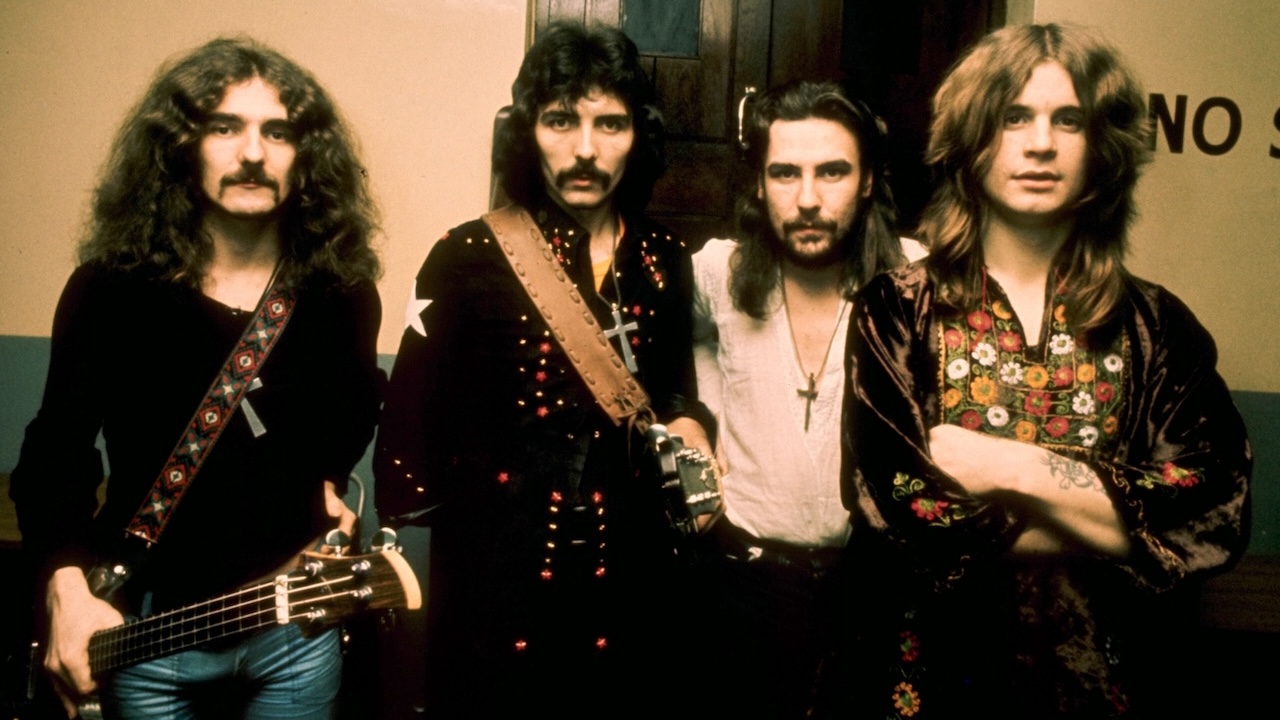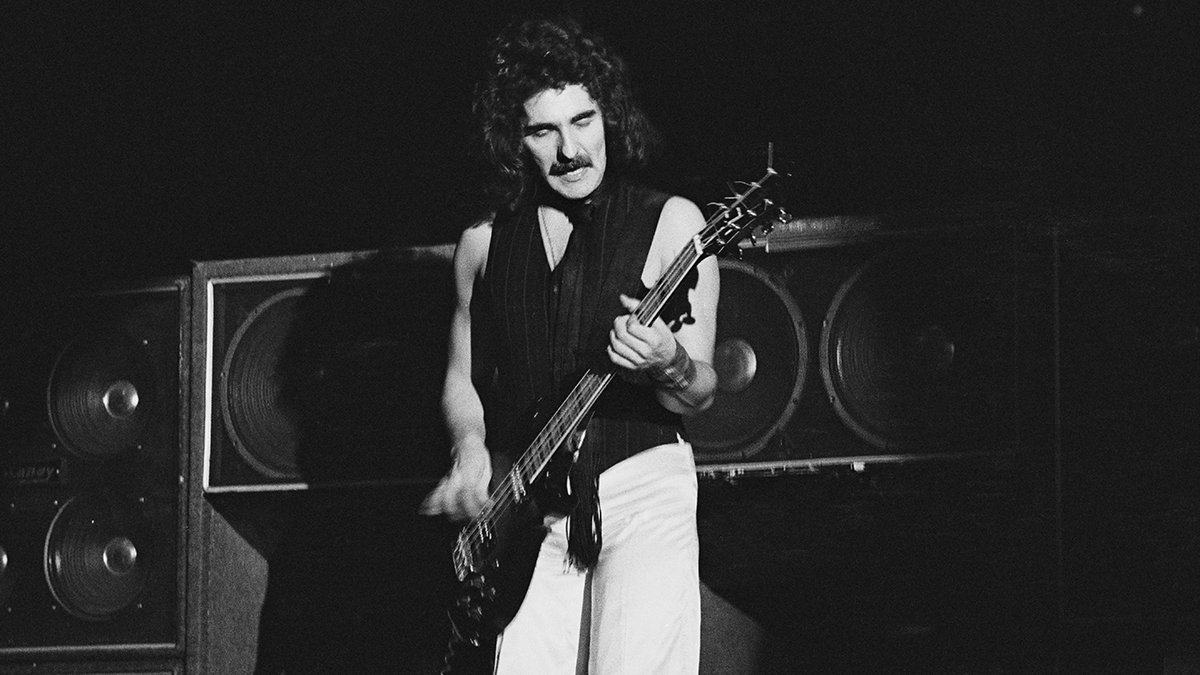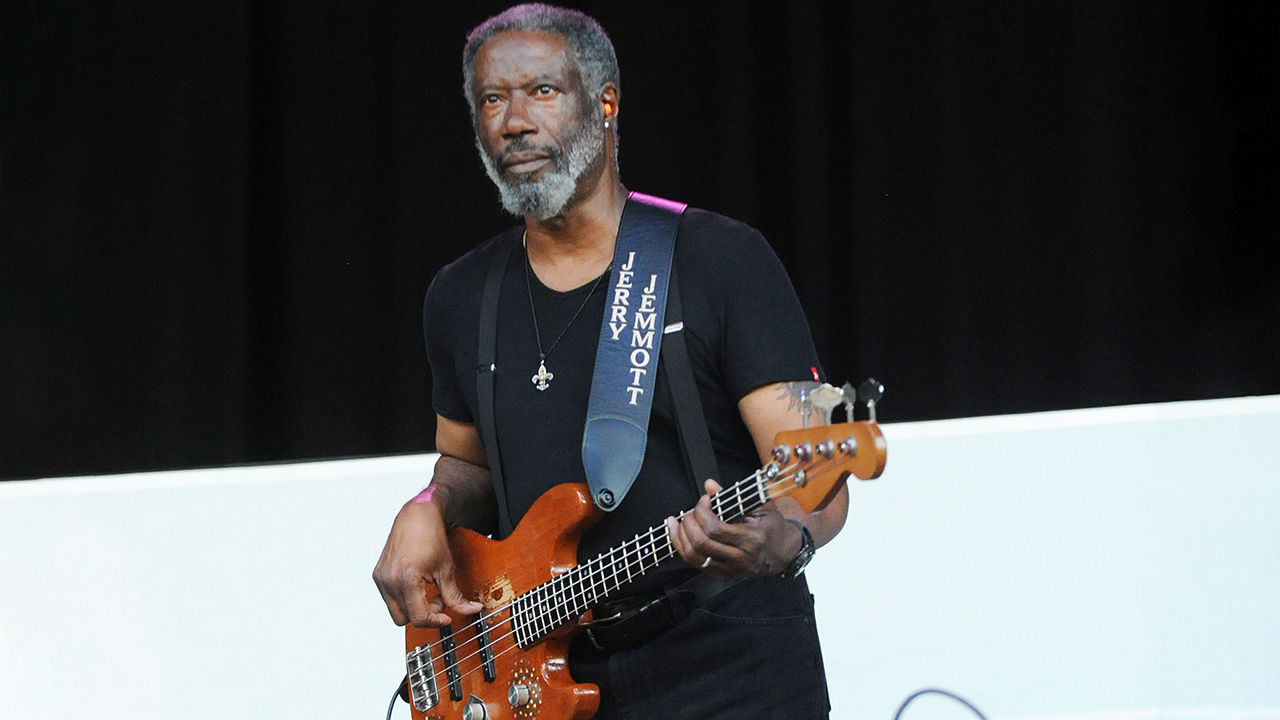“I couldn't afford a real bass guitar, so I just tuned the strings down on a Telecaster”: How Geezer Butler went from playing bass on a guitar to the ominous riff that defined one of Black Sabbath’s darkest moments
Geezer Butler’s iconic bassline announces this tune from the classic 1970 LP Paranoid

Metallica, Guns N' Roses, Slayer, Tool, Pantera, Alice In Chains and Gojira were among the acts who took part in Black Sabbath’s final ever show in the band’s hometown of Birmingham, UK. Aptly dubbed Back To The Beginning, Sabbath's last rodeo marked the final chapter in an epic 57-year run by the unequivocal godfathers of heavy metal.
The cornerstone of this success, as well as Sabbath's undeniable influence, stems from its sophomore effort, Paranoid, released by Vertigo in September 1970. The songs from Paranoid became not only a blueprint for Sabbath's subsequent recordings, but also the template for legions of metal bands that followed in their wake.
“Geezer Butler was basically playing lead bass on that album,” Machine Head’s Adam Duce told Bass Player back in 2011. “His playing was almost like singing and it was as integral to the songs as the vocals. His bass had a voice of its own.”
“I’ve always written my own bass parts in Sabbath, but when I first switched to bass from guitar, I was terrible,” said Butler in the October 2021 issue of Bass Player. “I'd never even thought about bass.
“I couldn't afford a real bass guitar, so I just tuned the strings down on a Telecaster and they were flapping all over the place. I was looking over at Tony lommi and playing the root note of whatever chord he was playing at the time!”
Paranoid was recorded at Regent Sound Studios in London with Rodger Bain producing and Tom Allom engineering. In the documentary Classic Albums: Black Sabbath – Paranoid, Allom says they recorded Paranoid in just two days – from 10 AM to 10 PM each day for basic tracks, with another two days at Island Studios (also in London) for overdubs and mixing.
In the film, Butler says the album was basically recorded live. “There weren't any trendy effects back then. It's like listening to a live band.”
All the latest guitar news, interviews, lessons, reviews, deals and more, direct to your inbox!
The material had already been developed on the road and honed at Rockfield Studios in South Wales under the tutelage of Bain, so the urgency of the band's performances is part of the album's appeal.
While most songs from Paranoid had been staples of Sabbath shows for years (War Pigs, Iron Man, Fairies Wear Boots, and the title track), one song that also made it into the set for the Back To The Beginning show was Hand of Doom, with Tool performing their own take on the Sabbath classic.
Along with the intro to N,I.B., Hand of Doom opens with one of Geezer Butler's most iconic bass riffs, but before discussing the bassline, it's important to note that Butler was also Sabbath's main lyricist. He often tackled controversial subject matter relating to war, politics, the occult, etc. In the Classic Albums documentary, he explains that his inspiration for Hand of Doom was drug abuse.
“We played two American army bases – one in Germany and one in England. It's where the guys went after doing a tour of Vietnam. Instead of going straight back to America, they had to stay at these halfway houses.
They were in a terrible state – doing heroin. There was nothing about it on the news. It stuck in my head. That's what I wrote about.”
Musically, Hand of Doom, like many songs on Paranoid, doesn't follow a traditional songwriting format of verse/bridge/chorus. Sabbath liked to piece together seemingly unrelated parts, creating radical changes in direction of energy, time and feel. Within any given tune there can be time changes, sometimes there are key changes, and sometimes there are both.
The track begins with the eight-bar bass intro riff, which Butler maintains through the verses and choruses of the song's first section, adding some fills in the choruses. This section has two main tonalities: the six-note D blues scale (D-F-G-Ab-A-C-D) and the five-note D minor pentatonic scale (D-F-G-A-D). This can be determined in part by the way Ozzy Osbourne bends the F’s in the vocal melody toward F# as well as the bluesy styles of Butler and guitarist Tony Iommi.
For the song's second section, at 02:05, the tempo and feel changes to a shuffle, while the key leans toward C minor, thanks to the presence of Ab's in the guitar part. Still, Osbourne is singing C blues-based melodies, and lommi supplements his power chords with a bluesy Eb/Bb – Bb7 turnaround. Meanwhile, Butler adds interesting phrase ending fills.

Following a slight uptick in tempo, lommi's guitar solo begins at 04:24, for which he switches to a C Dorian tonality, evident in his use of A's instead of Ab's.
Here, a hallmark of Butler's playing on Paranoid emerges: rather than plodding along on a fixed pattern or motif, he improvises in the second half of each measure, underscoring Iommi's solo with a pseudo-solo of his own. It gives these moments a heavy Cream-on-steroids kind of vibe.
Following a transition at 04:51, the first section returns via a fade-in. Two verses and choruses ensue before Butler ends the song the way he started it: alone.
Chris Jisi was Contributing Editor, Senior Contributing Editor, and Editor In Chief on Bass Player 1989-2018. He is the author of Brave New Bass, a compilation of interviews with bass players like Marcus Miller, Flea, Will Lee, Tony Levin, Jeff Berlin, Les Claypool and more, and The Fretless Bass, with insight from over 25 masters including Tony Levin, Marcus Miller, Gary Willis, Richard Bona, Jimmy Haslip, and Percy Jones.
You must confirm your public display name before commenting
Please logout and then login again, you will then be prompted to enter your display name.

